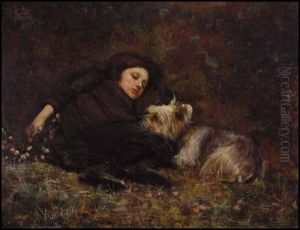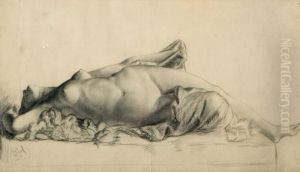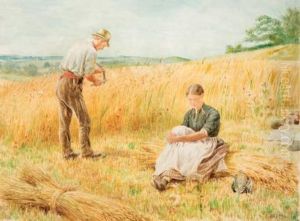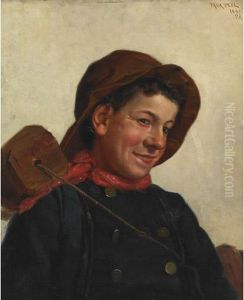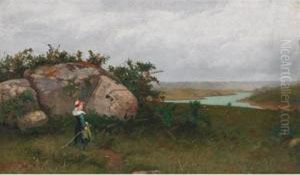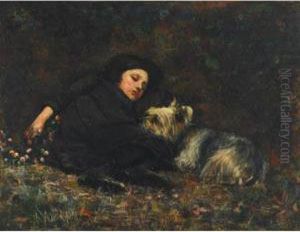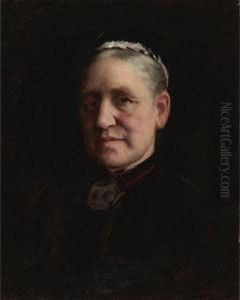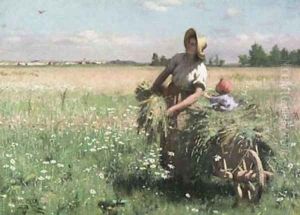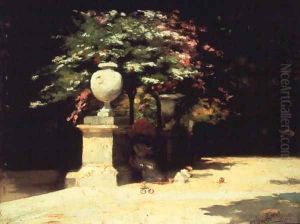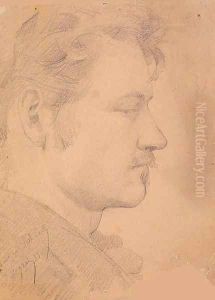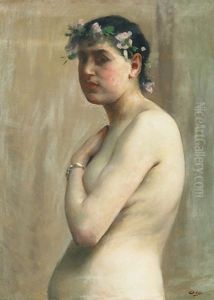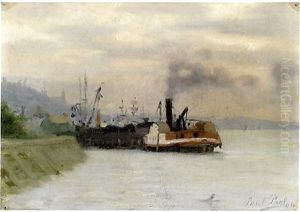Paul Peel Paintings
Paul Peel was a Canadian academic painter who was born on November 7, 1860, in London, Ontario, Canada. Despite his early death at the age of 31, Peel developed a reputation for his skillful technique and evocative use of light.
Peel demonstrated artistic talent from a young age and began his formal training at the Pennsylvania Academy of the Fine Arts in Philadelphia. Later, he moved to Paris to continue his education at the École des Beaux-Arts under the tutelage of renowned artists like Jean-Léon Gérôme and Benjamin Constant.
Throughout his career, Peel regularly exhibited his work at the Paris Salon, which was the official art exhibition of the Académie des Beaux-Arts in Paris. His paintings often depicted domestic scenes, landscapes, and portraits, characterized by a blend of realism and academic classicism. One of his most famous works is 'The Young Biologist' (1891), which showcases a child examining a frog, highlighting Peel's acute observation of everyday life and his delicate treatment of light and shadow.
Paul Peel's works received considerable acclaim not only in France but also in Canada and the United States. His painting 'After the Bath' (1890), depicting a nude young girl standing near a body of water, is one of his most recognized pieces and exemplifies his ability to capture the innocence and purity of childhood.
Tragically, Peel's promising career was cut short when he died suddenly from a lung illness on October 3, 1892, in Paris. Despite his brief career, Peel made significant contributions to Canadian art and is remembered for his technical proficiency and the gentle sensibility of his paintings. His works are held in numerous public collections, including the National Gallery of Canada and the Art Gallery of Ontario.


